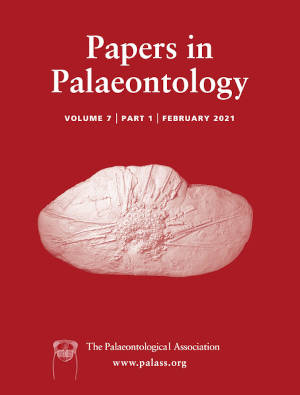Reg. Charity No. 1168330

The trace fossil Lumbricaria Münster is a common constituent of the Upper Jurassic lithographic limestones in southern Germany. Despite having been recognized more than 300 years ago, its nature and producer remain enigmatic. Controversial interpretations of Lumbricaria regard it either as the remains of worms, or as cololites (i.e. faecal material preserved in the gut) or coprolites (i.e. ejected faecal material) of worms, fish, holothurians or cephalopods. A morphological analysis of the type material and numerous specimens reveals two basic morphotypes of Lumbricaria, conformable with the ichnospecies L. intestinum (loosely confined, intertwined to elongate) and L. colon (well confined, densely entangled). Transitions and combinations between both ichnospecies exist and are the result of taphonomic effects. A comparison with modern analogues favours cephalopods (in particular nautiloids or ammonites) as the most likely producers of Lumbricaria, an interpretation that is supported by the finding of an Upper Jurassic nautiloid cast preserving a Lumbricaria-like faecal string within its body chamber. Ammonites are the likely producers of Lumbricaria from the Upper Jurassic of Germany.